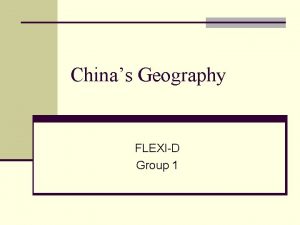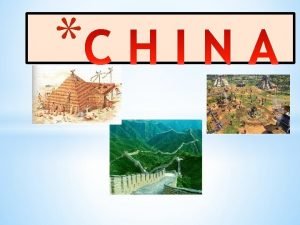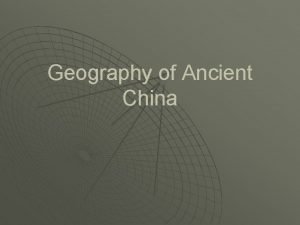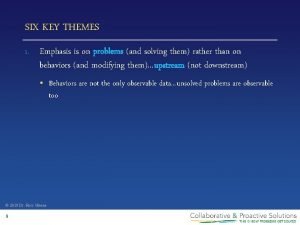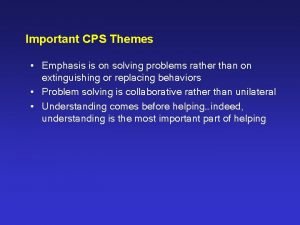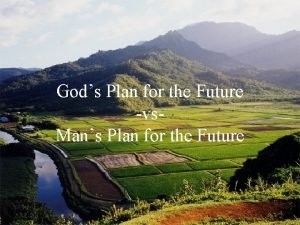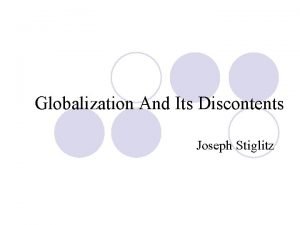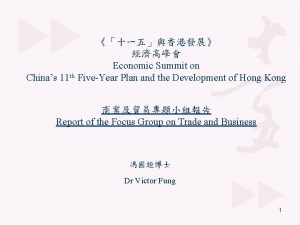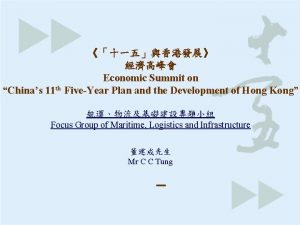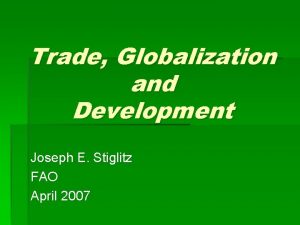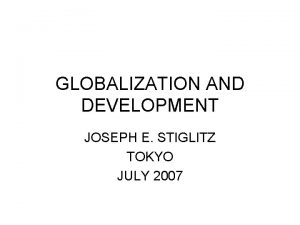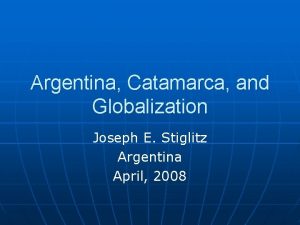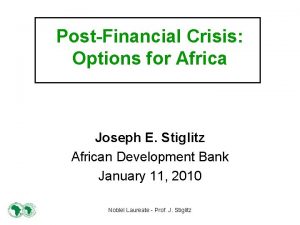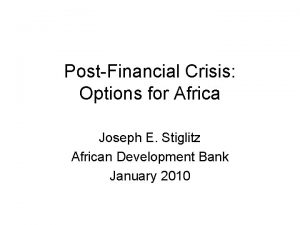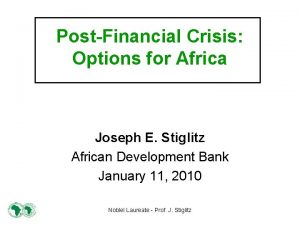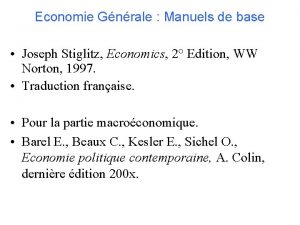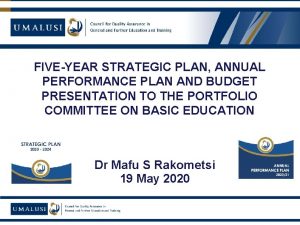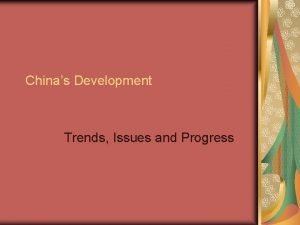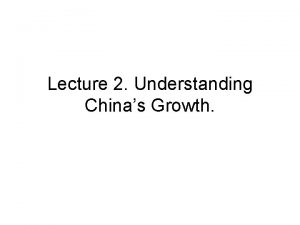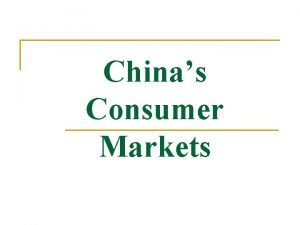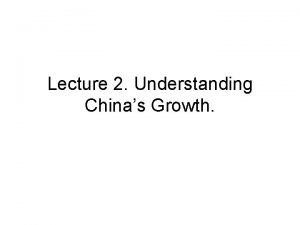Chinas 11 th FiveYear Plan Joseph E Stiglitz
























- Slides: 24

China’s 11 th Five-Year Plan Joseph E. Stiglitz March 2006

The Context • Enormous—unprecedented-- economic success – Previous economic revolutions—like the industrial revolution of the nineteenth century—had seen growth rates peak at around 2 to 3% • The golden age of growth in America in the fifties and sixties saw similar growth rates – China’s growth has been three times these numbers – The fraction of the Chinese population living on less than $1 a day has fallen from 63. 8% in 1981 to 16. 6% twenty years later

The Context • But enormous challenges – Even in purchasing power parity, per capita income is only an eighth of that of the United States – Growing inequality • The Development Forum two years ago emphasized that China was entering a phase in its development where it was making increasing demands on the environment – China’s share in global emissions is 3 times larger than its share in global GDP – China consumes 28% of world’s rolled steel, 50% of cement – Sustainability of China’s growth—and the well-being of the world —depends on China addressing these environmental issues • Changing global landscape – Increasing protectionism

The objective • Maintaining momentum, ensuring that growth is sustainable – Environmentally – Socially – Economically • Ensuring not just sustainable growth, but that the fruits of that growth are equitably shared – And that it is not just GDP that is growing, but that living standards are improvimg

CROSSING THE RIVER BY FEELING THE STONES • THE PLAN IS A COMPREHENSIVE GUIDE TOWARDS THE NEXT STEPS – But with a focus on the areas where government needs to focus its efforts • IN CHINA’S TRANSITION TO A MARKET ECONOMY WITH DISTINCTIVE CHARACTERISTICS – RECOGNIZES THAT THE ROLE OF THE GOVERNMENT HAS CHANGED – AND CORRESPONDINGLY, THE ROLE OF PLANNING • A GUIDE TO WHAT GOVERNMENT NEEDS TO DO • INCLUDING THE INSTITUTIONAL INFRASTRUCTURE

…. TOWARDS A MARKET ECONOMY WITH DISTINCTIVE CHARACTERISTICS • WHAT KIND OF A MARKET ECONOMY? • There are many versions of a market economy. The American model differs from the Scandinavian model, the Japanese model, and the Continental European Model • Different models have different consequences— for the distribution of income, for health, literacy, and other metrics of well-being • Choices reflect differences in history, values, etc.

CHINA’S MODEL, REFLECTED IN THE PLAN, BASED ON A VISION • OF THE ECONOMY AND SOCIETY IN WHICH NOT JUST INCREASES IN GDP MATTER – EMPHASIS ON HARMONY—EQUITY • PARTICULARLY PROBLEMS IN URBAN RURAL DISPARITIES • REGIONAL DISPARITIES • BUT ALSO DISPARITIES WITHIN URBAN SECTOR BETWEEN RURAL MIGRANTS AND OTHRS – EMPHASIS ON THE ENVIRONMENT • DIFFERENT VERSIONS OF MARKET ECONOMY WILL DIFFER IN THEIR ABILITY TO “DELIVER” THESE BROADER GOALS – IN JUDGING RELATIVE PERFORMANCE, IMPORTANT NOT TO BE “TRAPPED” INTO JUST FOCUSING ON GDP

MEASURING SUCCESS • WHAT WE MEASURE AND HOW WE MEASURE AFFECTS BEHAVIOR • WHICH IS WHY IT IS SO IMPORTANT THAT GOVERNMENT NOT FOCUS EXCESSIVELY ON GDP • USE AND DEVELOP BROADER AND BETTER MEASURES – REAL MEDIAN INCOME • GDP may increase even as real median income falls • The problem of rich countries with poor people – GREEN NET NATIONAL PRODUCT • GDP may increase even though Green NNP may fall – HDI • Some countries have increasing GDP, but lag in social indicators – POVERTY RATE, MEASURES OF INEQUALITY • Poverty may increase, even when GDP increases

DIFFERENT MODELS DIFFER IN ROLE OF GOVERNMENT • TODAY, THERE IS A CONSENSUS THAT SUCCESS REQUIRES A BALANCE BETWEEN GOVERNMENT AND MARKETS • The debate is largely about where to strike that balance • Different versions of market economy strike that balance in different ways • Differences related to differences in circumstances and values

Modern economic theory has emphasized the strengths and limitations of the market • Adam Smith’s invisible hand often is invisible, because it’s not there • As we look across societies, problems arise as often from too little government as too much • More generally, problem is often that the government does too much of what it shouldn’t, and too little of what it should • But China will need to guard against the risk of over reacting, going from excessive intervention into the economy to too little intervention – And avoiding simplistic “solutions” based on free market ideology

Maintaining balance • More than just a balance between government and markets – Important “third sector”: cooperatives, NGO, civil society, not-for profits – Play an important role in every market economy

Roles of Government • 11 th five-year plan identifies clear areas of focus for the government—related to areas where markets, by themselves, “fail” • Distribution—harmony • Innovation • Environment • Macro-economic balance • Governing the market

1. Harmony: the problem of inequality • Strong forces in modern market economies for increasing inequality – Partially globalization • Especially asymmetric globalization, with capital more mobile than labor • And advanced industrial countries maintaining huge agriculture subsidies, lowering prices of agricultural goods, lowering incomes in rural sector – With globalization, America and EU subsidies contribute to China’s problems

Social harmony and market failures – But partially reflects major market failures associated with corporate governance, reflected in scandals of 90 s; but the scandals were the “tip of the iceberg” • But even perfectly functioning markets do not necessarily result in “social harmony” —in a just or even socially acceptable distribution of income

Social Harmony and the rural sector • China now has the resources to improve living standards in the rural area • Many of the key policy (institutional) decisions will affect the rural sector, both in the short run and long – property rights debate (affects migration, wealth distribution) – Exchange rate

2. Innovation • Standard theory explains why markets invest too little in innovation (especially basic research) – Markets by themselves do not lead to “optimal” investments in R & D – Important societal spill-overs • What separates developed from less developed countries is not just a gap in resources, but a gap in knowledge • China has striven to reduce that gap • And now it seeks to establish a basis of independent innovation

3. ENVIRONMENT • China’s emphasis on the environment is commendable • The Development Forum two years ago emphasized that China was entering a phase in its development where it was making increasing demands on the environment

Two Comments • There should be more emphasis on creating livable cities – • --especially important with increasing fraction of population living in cities As China moves towards a market economy, should increasingly rely on market mechanisms to address externalities – – – --carbon or btu taxes, recycling taxes But in some areas, even market economies rely heavily on direct “controls”—zoning Example of general point—property rights are always circumscribed

4. Macro-management • China’s growth has been export based • But it may be difficult for it to sustain the pace of export growth • Especially as it confronts growing protectionism – Even when problems (e. g. U. S. huge trade deficit) is not the result of China’s own policies • Plan recognizes need for China to increase domestic market

Increasing domestic demand • Better social safety nets (social security, health care) and better insurance markets would help – Reducing need for precautionary savings • More public support for education • Tax structure – Move to consumption based V. A. T. makes little sense • Designed for countries worried about insufficient savings • China needs higher revenues of broader tax base • Regressive—China needs a more progressive tax system to deal with growing inequality

5. Making markets work: providing institutional infrastructure • Market economies only work when there is effective competition – Need for strong anti-trust agency – Need for regulating natural monopolies • • Financial and securities market regulation Balanced bankruptcy laws Balanced intellectual property laws In many of these areas, especially where there is risk of regulatory capture, important to have multiple oversight and to have flexible laws (like NY Martin Act) to check “innovative” abuses

Designing Institutions • More than one set of institutions that “work”—just like there is more than one form of market economy – Trade-offs and risks – Ideology and Interests—often the conjoined influence of free market ideology and interests attempt to shape a market economy that is not in the broader interests of society • Special interests use their economic power and free market ideology to try to shape rules of the game to favor themselves • Putting little value on broader societal concerns— environment, just distribution of income – Evidenced in widespread anti-environmental policies, tax loopholes and subsidies in U. S.

“Crossing the river by feeling the stones” • The 11 th five year plan combines a comprehensive and pragmatic blueprint with a vision: a guide to the country as it takes its next steps in crossing the river. – As China marches towards a market economy, it should be careful not to imitate those parts of the market economy which are badly flawed; at the very least, it should inform itself about the flaws, discuss how they can be addressed, and look for alternatives – Every successful market economy has been based on achieving an appropriate balance between the market and government – The 11 th five year plan correctly identifies key areas in which government will have to play a central role if China is to ensure the continuation of its successful growth, and if it that growth is to result in sustainable and equitable increases in living standards for the people of China

• The 11 th five year plan combines a comprehensive and pragmatic blueprint with a vision: a guide to the country as it takes its next steps in crossing the river.
 Juego damas reglas
Juego damas reglas Whats chinas longest river
Whats chinas longest river Großlandschaften chinas
Großlandschaften chinas China 4 großlandschaften
China 4 großlandschaften Chinas physical features
Chinas physical features Dynastys of china
Dynastys of china Großlandschaften china karte
Großlandschaften china karte Regiones chinas
Regiones chinas National animal of china
National animal of china National animals of italy
National animals of italy Tomografia homero simpson
Tomografia homero simpson Ancient china map taklamakan desert
Ancient china map taklamakan desert Problem solving plan plan b flowchart
Problem solving plan plan b flowchart Place/location/destination plan a
Place/location/destination plan a Long term plan and short term plan
Long term plan and short term plan Problem solving plan (plan b flowchart)
Problem solving plan (plan b flowchart) Lesson plan on micro teaching
Lesson plan on micro teaching Problem solving plan (plan b flowchart)
Problem solving plan (plan b flowchart) New jersey plan vs virginia plan
New jersey plan vs virginia plan Cargo stowage plan example
Cargo stowage plan example Layout lokasi
Layout lokasi God's plan versus man's plan
God's plan versus man's plan Virginia plan and new jersey plan venn diagram
Virginia plan and new jersey plan venn diagram Va plan nj plan great compromise
Va plan nj plan great compromise People don t plan to fail they fail to plan
People don t plan to fail they fail to plan

